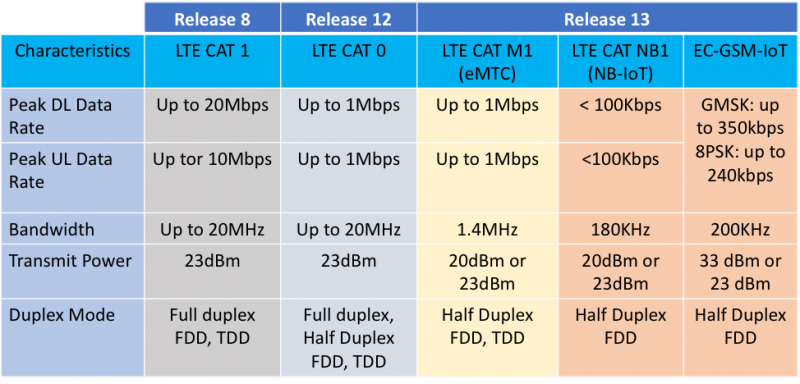In last few years, Internet of Things (IoT) standards have evolved considerably to provide seamless convergence of the digital and the physical world. IoT allows applications, machines connected to the network to communicate among them or with servers without human intervention.
In last few years, Internet of Things (IoT) standards have evolved considerably to provide seamless convergence of the digital and the physical world. IoT allows applications, machines connected to the network to communicate among them or with servers without human intervention.
Most IoT applications require small data exchange with infrequent data transmissions and traditional mobile networks did not handle it efficiently as resource reservation is needed before transmission. There was a need to optimize mobile networks to make it IoT friendly. 3GPP was initially focused on the mobile broadband market with 4G LTE technology, however, it also recognized the need for optimized solutions for the IoT and started improvements for machine type communications (MTC) in later releases to handle the low power wide area networks (LPWAN) IoT applications.
In Release 12, 3GPP added some enhancements to handle IoT requirements like low data traffic, low power consumption, and lower modem costs:
- Power saving mode (PSM) allows the device to skip the periodic page monitoring cycles between active data transmissions, allowing the device to enter a deep-sleep power state. It suits well for IoT sensor networks that seldom send data to the device.
- LTE device Category 0 with 50% of the complexity of a Category 1 modem, reduces the supported data rate down to 1 Mbps. Downlink channel bandwidth for the data channel in the baseband is reduced, the control channels still allowed to use the carrier bandwidth.

With Release 13, 3GPP introduced a set of enhancements to support narrowband IoT applications which address improved indoor coverage, support for a large number of low throughput devices, low delay sensitivity, low device cost, low device power consumption and optimized network architecture:
- eMTC (Enhances Machine Type Communications), also known as LTE Cat-M1, enhances Release-12 MTC by bringing complexity reductions and coverage enhancements.
- NB-IoT adds new radio which is optimized for the low end of the market with a reduced bandwidth of 180 kHz.
- EC-GSM-IoT evolves EGPRS network and offers combination with PSM to prepare GSM/EDGE network ready for IoT
NB-IoT brought key functionalities, including support of non-real-time voice, that enabled 3GPP networks to offer low cost, extended coverage IoT marketplace. NB-IoT offers three deployment options:
- In-band: using resource blocks within a normal LTE band
- Guard band: utilize unused resource blocks within LTE guard-band
- Stand-alone: utilize reframed GERAN spectrum
However, as IoT market demand keeps growing and required to connect large numbers of IoT devices with the cellular network. To handle the growth and demand, 3GPP extended IoT features in Release 14 by adding
- Enhancements to efficiently use NB-IoT resources
- Narrowband support for positioning
- Support for single-cell multicast
- Power consumption and latency reduction
- Higher data rates and VoLTE support for eMTC
- Mobility and service continuity enhancements
From initial phase of 5G standard development, 3GPP focused on three principal areas: eMBB (enhanced Mobile Broadband), mMTC (massive Machine Type Communications) and URLLC (Ultra-Reliable and Low Latency Communications). With mMTC as a key focus area, 3GPP maintains massive IoT momentum for very low-cost UE with deep coverage support and high connection capacity.
Release 15 delivers the first set of 5G standards and is expected to provide deep coverage for challenging locations, ultra-low energy usage to provide 10+ years of battery life and ultra-high node density for 1 million devices per square kilometer. Release 15 also adds TDD support into NB-IoT as many TDD deployments also exist globally.
As 5G specifications, deployments further evolve along with 5G New Radio introduction, cellular networks are ready for massive IoT roll-outs and can scale to support diverse of IoT requirements.
